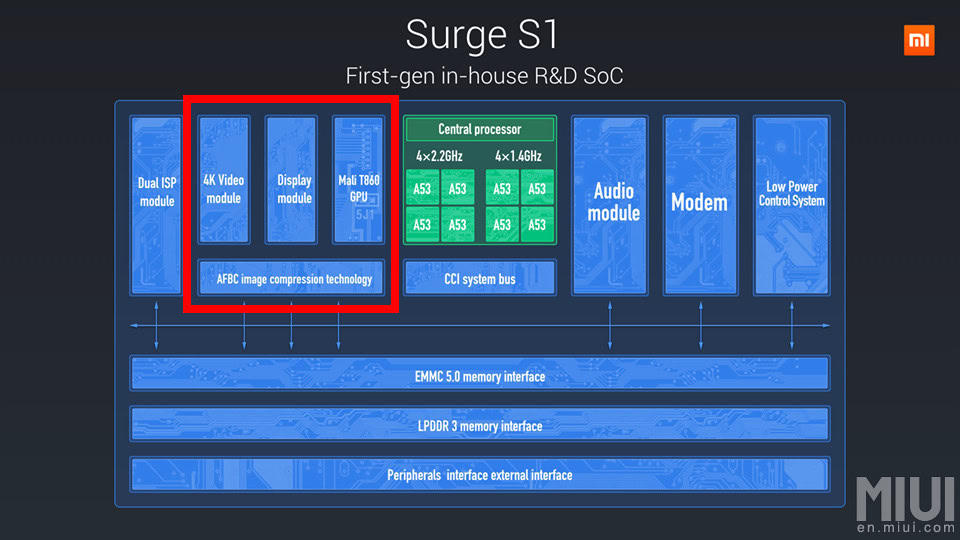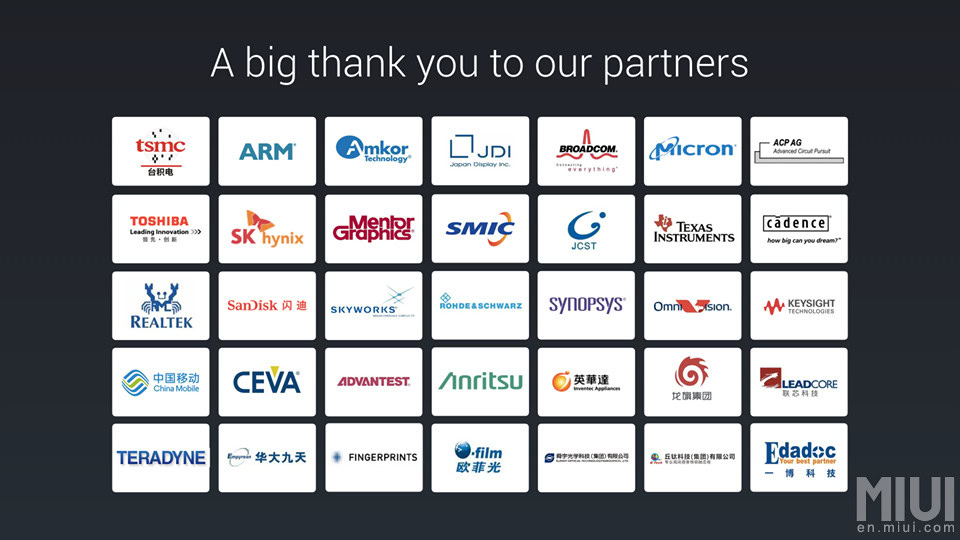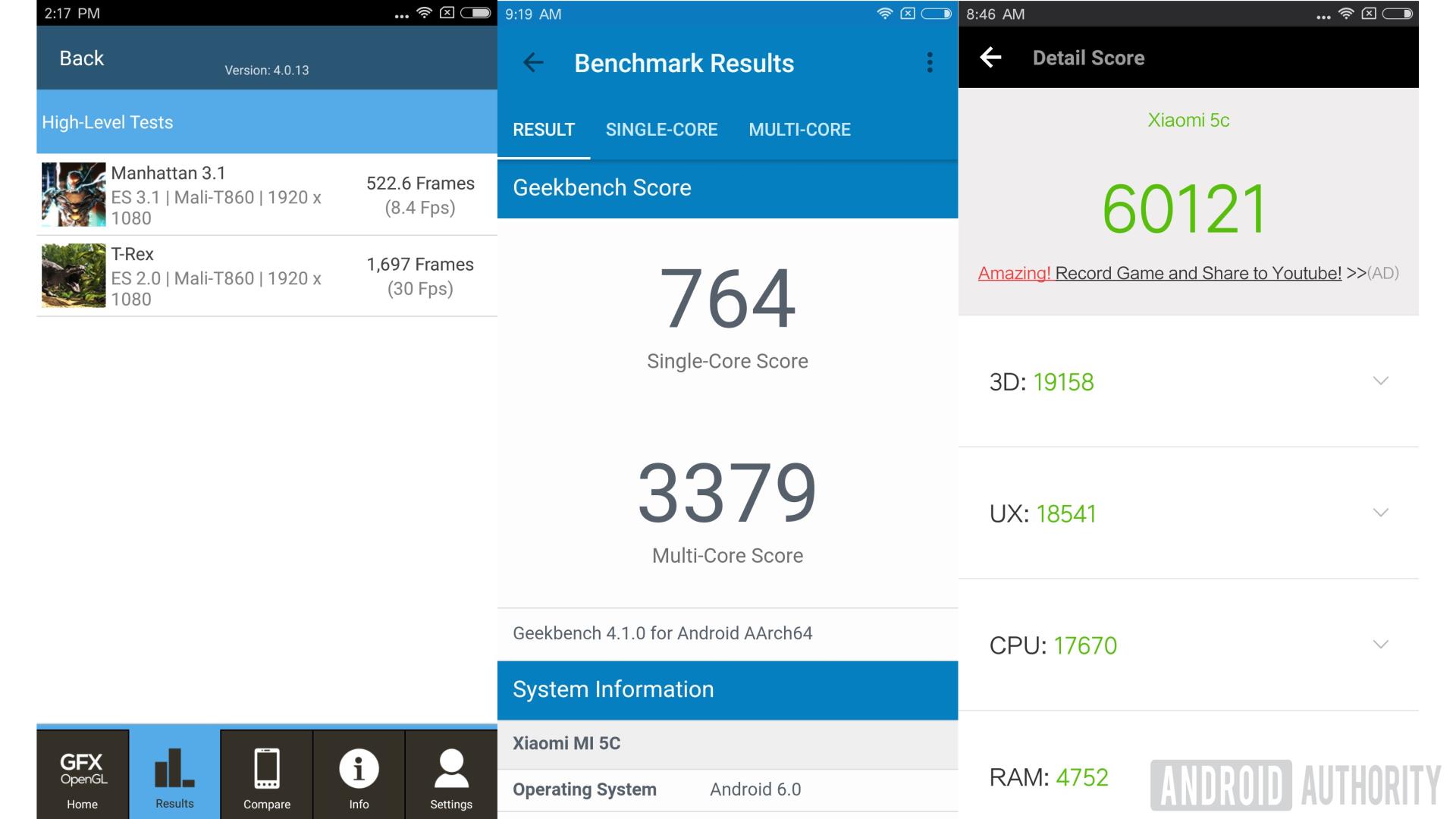Affiliate links on Android Authority may earn us a commission. Learn more.
What's inside the Xiaomi Surge S1 processor? - Gary explains
Published onJuly 10, 2017

It isn’t every day that there is a new player in the smartphone mobile processor arena, but when there, is it is worth taking note. Earlier this year Xiaomi launched the Mi 5C, a 5.15 Full HD device with 3 GB of RAM and a 12 MP main camera. In itself this wasn’t particularly ground breaking news, but what was important is that this device doesn’t use a mobile processor from Qualcomm, or even one from MediaTek – instead it uses Xiaomi’s own processor called the Surge S1.
There are four main players in the smartphone processor arena: Qualcomm, MediaTek, Samsung and HUAWEI. The first two make processors which other OEMs like Xiaomi, Sony, HTC, LG, etc buy and put in their devices. While the latter two make processors that are used in their own devices. Samsung has its Exynos range while HUAWEI has its Kirin line-up.
Xiaomi has been a faithful Qualcomm customer since its beginning. The first Xiaomi phones used the Qualcomm Snapdragon S3 processor and although Xiaomi occasionally releases a device with a MediaTek processor, in general, Xiaomi phones have Qualcomm processors. Until the Mi 5C that is.
The initial capital expenditure to create a mobile processor is massive, probably in excess of $30 million and it also takes a long time. Xiaomi established its mobile processor design house called Pinecone back in 2014. The first engineering samples of the Surge S1 were made in late 2015 and the chip entered mass production at the end of 2016. The first processor is the hardest and subsequent Surge processors should take less time to design and manufacture.
When the Mi5C was launched, our very own Robert Triggs took a look at the Surge S1 based on the information available at the time. However, I recently got hold of a Xiaomi Mi5C, not really to do a phone review, but more to take a deeper look at the Surge S. Particularly since the rumor is that the S1 is the first in a line of processors and that subsequent processors won’t only be aimed at the mid-range, as Xiaomi is also looking to compete at the high-end. Considering Xiaomi’s meteoric rise and its influence in Asia, these Surge processors could become significant.
| Xiaomi Surge S1 | Qualcomm Snapdragon 626 | MediaTek Helio P25 | HiSilicon Kirin 655 | |
|---|---|---|---|---|
CPU | Xiaomi Surge S1 4x Cortex-A53 @ 2.2GHz 4x Cortex-A53 @ 1.4GHz | Qualcomm Snapdragon 626 8x Cortex-A53 @ 2.2GHz | MediaTek Helio P25 8x Cortex-A53 @ 2.5GHz | HiSilicon Kirin 655 4x Cortex-A53 @ 2.1GHz 4x Cortex-A53 @ 1.7GHz |
GPU | Xiaomi Surge S1 Mali-T860 MP4 | Qualcomm Snapdragon 626 Adreno 506 | MediaTek Helio P25 Mali-T880 MP2 | HiSilicon Kirin 655 Malit-T830 MP2 |
RAM | Xiaomi Surge S1 2x 32-bit LPDDR3 @ 933MHz | Qualcomm Snapdragon 626 2x 32-bit LPDDR3 @ 933MHz | MediaTek Helio P25 2x LPDDR4X @ 1600MHz | HiSilicon Kirin 655 2x 32-bit LPDDR3 @ 933MHz |
Flash | Xiaomi Surge S1 eMMC 5.0 | Qualcomm Snapdragon 626 eMMC 5.1 | MediaTek Helio P25 eMMC 5.1 | HiSilicon Kirin 655 eMMC 5.1 |
DSP / co-core | Xiaomi Surge S1 32-bit DSP | Qualcomm Snapdragon 626 Hexagon DSP | MediaTek Helio P25 N/A | HiSilicon Kirin 655 i5 co-processor |
Camera support | Xiaomi Surge S1 36MP, Dual ISP (14-bit) | Qualcomm Snapdragon 626 24MP, Dual ISP (12-bit?) | MediaTek Helio P25 24MP single or 2x 13MP dual (12-bit) | HiSilicon Kirin 655 Dual ISP |
Modem | Xiaomi Surge S1 150Mbps down 50Mbps up | Qualcomm Snapdragon 626 300Mbps down 150Mbps up | MediaTek Helio P25 300Mbps down 50Mbps up | HiSilicon Kirin 655 300Mbps down 50Mbps up |
Video | Xiaomi Surge S1 4k 30fps playback & capture | Qualcomm Snapdragon 626 4k 30fps playback & capture | MediaTek Helio P25 4k 30fps playback & capture | HiSilicon Kirin 655 4k 30fps playback & capture |
Process | Xiaomi Surge S1 28nm HPC | Qualcomm Snapdragon 626 14nm FinFET | MediaTek Helio P25 16nm FinFET | HiSilicon Kirin 655 16nm FinFET |
At the heart of the Surge S1 is ARM’s Cortex-A53 64-bit core. The S1 is an octa-core processor with four Cortex-A53 cores running at 2.2 GHz and another four A53 cores running at 1.4 GHz. It is built using ARM’s big.LITTLE system where the faster cores act as the big cores and the slower cores as the LITTLE ones. Binding all the cores together is ARM’s Cache Coherent Interconnect (CCI), probably the CCI-500.
As for multimedia, Xiaomi is using ARM’s Mali GPU, a four core Mali-T860 to be precise. The T860 is 40% more power efficient than the previous high-end Mali-T760 and also incorporates bandwidth reduction technologies such as ARM Frame Buffer Compression (AFBC) and Adaptive Scalable Texture Compression (ASTC). The Mali-T860 also supports native 10-bit YUV input and output along with an impressive range of graphic and compute APIs including OpenGL ES 3.1 and OpenCL 1.2/1.1.
AFBC
It is the inclusion of AFBC (and its prominence in Xiaomi’s launch material) that prompted me to think about other components that might be in the Surge S1. AFBC is available in all ARM Mali Video Processors, ARM Mali Display Processors and recent ARM Mali GPUs. We know that the Surge S1 uses a Mali GPU, but could it also be using other Mali products? While AFBC is also available as licensable IP, it would make sense for Xiaomi to use a Mali Display Processor and a Mali Video Processor and benefit from using AFBC between all the multimedia components.

When you look at Xiaomi’s block diagram for the Surge S1 you can see the AFBC is used across the GPU, the “Display module” and the “4K video model”. There are several different “system information” apps available from the Play Store including AIDA64. These apps dig around inside Android to probe the hardware to try to find as much information as possible about the system. Using AIDA64 I was able to see that the Xiaomi Mi5C included the ARM Mali-V500 video codecs. These are the software drivers for the V500 video processor.
Whenever you watch a video on your smartphone it needs to be decoded from a format like MP4 to a series of frames, which are shown on the display. This decoding can be done in the CPU, however it is much more efficient to do it in hardware. The V500 can decode H.264, H.263, MPEG4, MPEG2, VC-1/WMV, Real, and VP8 plus it supports 4K up to 60 frames per second.
So the Surge S1 uses the Mali-T860 and the Mali-V500. What about the third module covered by AFBC, the “Display module.” When the Mali-T860 was launched, ARM also launched a new Display Processor, the DP550. The Mali-DP550 allows a SoC maker to bring energy efficient processing all the way to the glass! It can handle composition, rotation, scaling, post-processing and display output in a single pass. There is also support for 7 layer compositions. Another quick look into the internals of Android (now in the /proc file system) shows that the Surge S1, does indeed use the DP550.
By using all three Mali multimedia components, the Surge S1 benefits from the most efficient multimedia driver stack as ARM provides an integrated software stack, which would have saved Xiaomi lots of time and money in developing its own drivers, plus it ensures that the drivers are fully optimized and offer the best power efficiency.
Other partners
Since I was digging around to find out what was included in the Surge S1, I also came across other minor components that could be of interest. For example, the Surge S1 uses the Realtek RT5659 for its audio codec, an ambient light sensor from Liteon, a Synaptics DSX touchscreen, an audio amplifier from NXP, and various sensors from Texas Instruments.
However don’t think for a moment that Xiaomi just glued a lot of circuits from a bunch of different vendors together to make the Surge S1. Far from it. There are several Xiaomi designed components in the Surge S1. For example, Xiaomi has publicly said that it uses its own Image Signal Processor (ISP) algorithms for the camera.

Benchmarks
Since the Surge S1 is a Cortex-A53 octa-core processor, it isn’t designed for flagship devices, however it is designed to compete with the mid-range offerings from Qualcomm, HUAWEI and MediaTek. To gauge how the S1 performs alongside its peers I ran the normal suite of benchmarks on the Xiaomi Mi5C and compared it to the results from similar Cortex-A53 octa-core based devices.
| Phone | SoC | CPU | GPU |
|---|---|---|---|
| Phone Xiaomi Mi5C | SoC Surge S1 | CPU 4x Cortex-A53 @ 2.2GHz + 4x Cortex-A53 @ 1.4GHz | GPU Mali-T860 MP4 |
| Phone HUAWEI P10 lite | SoC Kirin 658 | CPU 4x Cortex-A53 @ 2.1GHz + 4x Cortex-A53 @ 1.7GHz | GPU Mali-T830 MP2 |
| Phone HUAWEI Nova | SoC Snapdragon 625 | CPU 4x Cortex-A53 @ 2.0GHz + 4x Cortex-A53 @ ???GHz | GPU Adreno 506 |
| Phone OPPO F1 Plus | SoC Helio P10 | CPU 4x Cortex-A53 @ 2.0GHz + 4x Cortex-A53 @ 1.2GHz | GPU Mali-T860 MP2 |
There are quite a lot of octa-core Cortex-A53 mobile processors, in fact the Cortex-A53 is one of the world’s most popular 64-bit processor cores. To put the performance of the Surge S1 into context I tested it against the HUAWEI 10 Lite, the HUAWEI Nova, and the OPPO F1 Plus. I could have picked other devices, however these are devices that I have personally tested and have here at hand.

The Surge S1 certainly has the best multimedia capabilities in the group with those three Mali components (GPU, video and display) and Xiaomi’s choice of a 4 core GPU (i.e. MP4), rather than the 2 core variants found in the Kirin 658 and the Helio P10, makes it a clear winner. The Surge S1 gets the best score on GFXBench and 3DMark.
When it comes to the CPU side, the Surge S1 looks good on paper with the highest clock speed, however it doesn’t seem to translate into the highest benchmark scores. The Surge S1 actually comes in third for the AnTuTu and Geekbench Single-core tests, however it does take the crown for the Geekbench Multi-core benchmark. The Surge S1 also has the highest Vellamo score of the four.
Wrap up
Based on these findings, the Surge S1 is certainly a good mid-range processor and when you consider it is Xiaomi’s first generation SoC, it is truly remarkable. The future potential for a full range of disruptive processors from Xiaomi is high. The current rumors are that Xiaomi is working on the Surge S2 which will feature a quad-core Cortex-A73 cluster and a quad-core Cortex-A53 cluster. If the Surge S2 builds on the S1 then we can also expect to see a Mali GPU, a Mali Video processor and a Mali Display processor. My guess would be a Mali-G71, a Mali-V550 and a Mali-DP650.
In the meantime, the Surge S1 can be found in the Mi5C and it will be interesting to see if Xiaomi will try to commercialize the Surge S1 by offering it to other smartphone makers. Xiaomi recently inked a big deal with HMD, which makes Nokia phones under license, and the rumors are that HMD will use the Surge S1 in some of its future Nokia branded handsets.